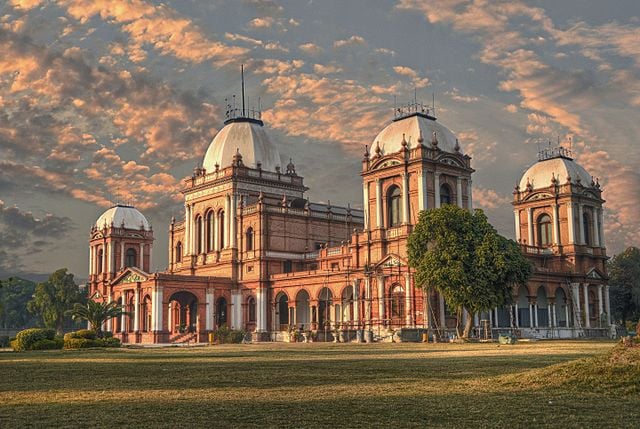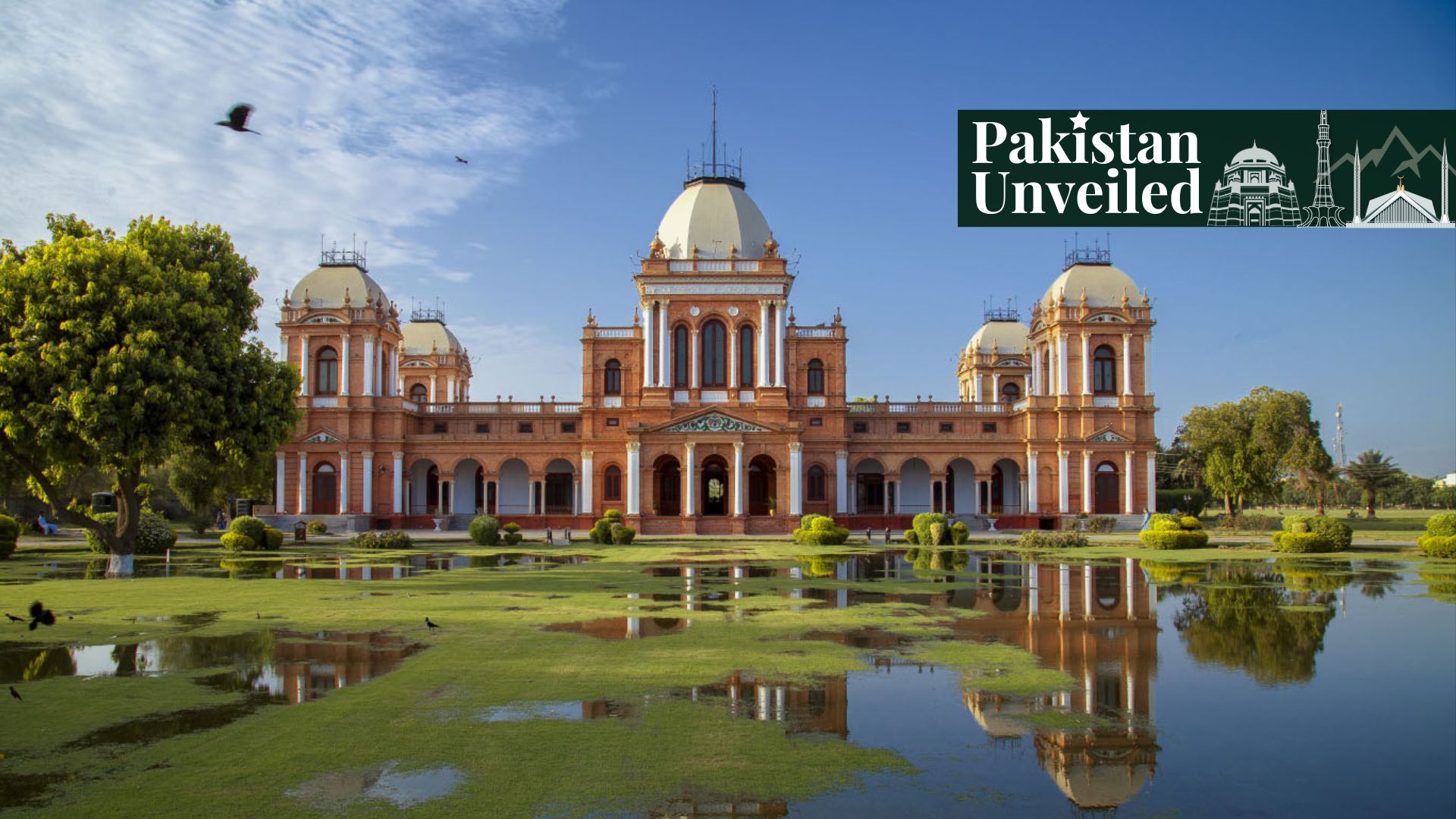Nestled in the storied city of Bahawalpur, Punjab, stands Noor Mahal, a grand testament to the Nawabs of Bahawalpur that once ruled the land. But from the natural wonders of the North or the many ancient sites of Taxila or Mohenjo-Daro, the Noor Mahal seldom gets any acclaim, making it one of the many hidden gems of Pakistan.

Like many stories from the past, the origins of the Mahal are steeped in legend. The most interesting one, though, is the history of the Noor Mahal, which is reminiscent of a famous Mughal marvel beyond the border.
Who Built the Palace?
Nawab Sadiq Khan IV, the tenth Nawab of Bahawalpur, known as the “Shahjahan of Bahawalpur,” commissioned the Palace for his wife, Maharani Noor Bakht Begum. In a rather ironic twist, she only spent a single night at the abode before refusing to live there anymore. Her discomfort seemingly stemmed from its proximity to the Basti Muluk Shah Graveyard. So, the grand tribute was relegated to be used primarily as a guest house for noble families and dignitaries visiting the state.
Construction of the Noor Mahal Palace
Designed by an Englishman named Mr. Heenan, the Mahal was built in 1872. Its completion took 3 years. It cost roughly Rs 1.2 million at the time, a tiny sum for the bottomless coffers of the Nawabs. Deep in the foundation, the builders placed a map of the state along with coins of the state as a good omen for their construction efforts.
On a more objective note, the Noor Mahal covers an impressive area of 44,600 square feet or 4,140 m², boasting 32 rooms, including 14 in the basement, 6 verandas and 5 domes. At the beginning of the 20th century, then-Nawab of Bahawalpur Muhammad Behawal Khan increased the width of the premises by building a mosque. This mosque was said to be inspired by the design of Aitchison College in Lahore.
Architecture
The Mahal is a fusion of imaginative styles, each complementing and blending to create a timeless and evocative feel. The modern style of the Italian Chateau was bold and pronounced, if not grander than its European counterparts. It’s held up with strong Corinthian columns, and the Corinthian touch goes even further with a pronounced influence on the balustrade, pediments, and the vaulted ceiling of Durbar Hall. The Islamic style is evident in its five large domes, whereas the angular elliptical shapes are a stroke of general subcontinent style.
Columns with official plaques will welcome you as you enter ‒ each plaque telling important stories from the political history of Bahawalpur. The terracotta tiles under your feet will dazzle and amaze you as you walk through a moment in history. Looking up from the mesmerizing tiles, you’ll be greeted with the Darbar room, a spot of royal glamour raised by soaring ceilings, dazzling chandeliers and an explosion of vibrant colours on the roof, enchanting your every step.
It’s a palace etched into history, and every crevice is brimming with historical importance. It’s the legacy of the state that once was, a statue to a bygone era, a monument erected when it was at its grandest epoch. Its rooms are dipped in opulence and decadent regality, and the Western paintings blend with traditional portraits and muskets. Elegant carpets and lofty curtains juxtapose with sharpened swords on display, cementing the timeless charm of the Palace.
Like many princely states in an alliance with the British Empire, the Bahawalpur State was asked to join either Pakistan or India, and its predominantly Muslim population made the decision an easy one. After the merger with Pakistan in 1956, the Noor Mahal came under the care of the Auqaf Department. In 1971, it was leased to the army, and by 1997, it was officially purchased by the military for 119 million PKR. Since 2001, Noor Mahal, under the auspices of the Department of Archaeology, has been declared a “protected monument” and opened its doors to the public.
Today, the Palace is a tourist attraction for the local populace, but it must do more for its propagation to ensure foreigners know more about this side of Pakistan. The lush green gardens cradling the Palace provide a peaceful retreat and are often used for photography, weddings, and cultural events.
Like many princely states in an alliance with the British Empire, the Bahawalpur State was asked to join either Pakistan or India, and its predominantly Muslim population made the decision an easy one. After the merger with Pakistan in 1956, the Noor Mahal came under the care of the Auqaf Department. In 1971, it was leased to the army, and by 1997, it was officially purchased by the military for 119 million PKR. Since 2001, Noor Mahal, under the auspices of the Department of Archaeology, has been declared a “protected monument” and opened its doors to the public.
If you want to submit your articles and/or research papers, please check the Submissions page.
The views and opinions expressed in this article/paper are the author’s own and do not necessarily reflect the editorial position of Paradigm Shift.
The author is studying Economics at the National University of Science and Technology (NUST) with a keen interest in financial affairs, international relations, and geo-politics.


